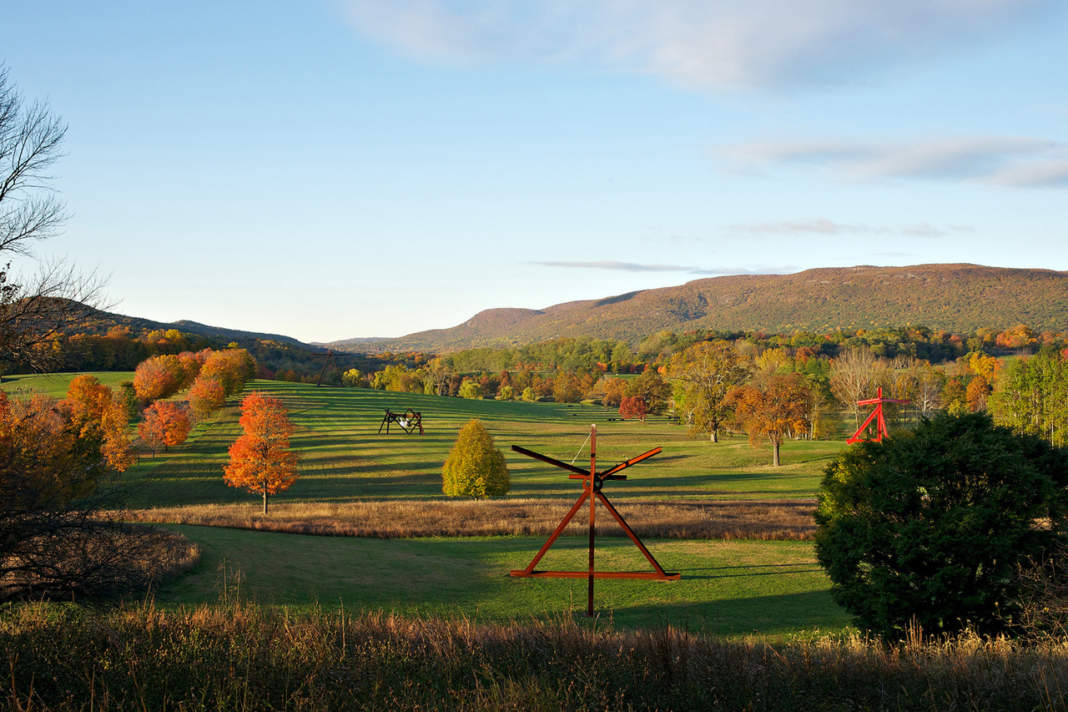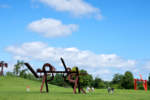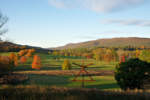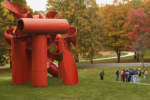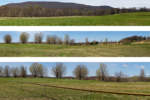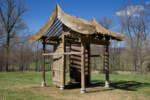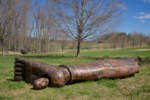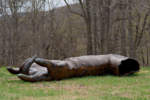Along the Museum Road in New Windsor North-east of New York, it is possible glimpse the amazing sculptures of the Storm King Art Center. Some of the most representative works of modern art inhabit a somewhat enchanted landscape behind Montainville, where there are stunning views of the summit of Storm King Mountain along the Hudson River in Cornwall, from which the museum takes its name. The vast expanse of park land, characterized by the variegated alternation of farmland, natural woodlands, meadows, ponds, swamps and rivers, covers 500 hectares and is home to more than a hundred sculptures, dating from post-World War II to the present, designed by internationally renowned artists. Fourteen monumental works by the sculptor David Smith dominate an extraordinary collection of modern masters including Alexander Calder, Sol LeWitt, Henry Moore, Louise Nevelson and Isamu Noguchi. The collection was subsequently extended through loans and acquisitions of important works by contemporary sculptors including Magdalena Abakanowicz, Alice Aycock, Zhang Huan, Maya Lin, Nam June Paik, Richard Serra and others. John P. Stern has been president of the Storm King Art Center since 2008 when he succeeded his father Peter H. Stern, co- founder with Ralph E. Ogden of the museum in 1960, period dating back to the first acquisition of works by various international sculptors. The park-museum, designed by William A. Rutherford, completes the permanent collection of sculptures, which draws attention daily to numerous visitors from around the world, with an extraordinary programme of special temporary exhibitions. Currently showing is an exhibition by the Chinese artist Zhang Huan and a large installation by the American Virginia Overton.
Five questions to David R. Collens
There is no doubt, as it is widely recognized, that the role of the client is essential to the final outcome of any achievement, whether public or private, be it an architectural work or a work of art in the true sense of the word. The play of parties between the artist and the client, ever since the Renaissance, has ensured a high quality of results. In particular, in Florence, history teaches us how the role of great people belonging to the most well-known families in the city, including the Pitti, the Strozzi, and of course the Medici, have performed a decisive role in the success of the city as the “capital“ of Humanism. The great economic power unleashed by a vigorous financial political ability was the lifeblood for an extraordinary cultural renaissance that has inundated the arts in general, conceived as the main instrument for satisfying one’s own desire for success, along with building an overall wealth of which the city still enjoys today. The relationship between art and society constantly changes in time and space, but the client still to this day plays a significant role in the art world insofar as he allows the artist to work and experiment with his own creativity and his own path of research through individual works. Over the past few years, increasingly widespread attention has been given to art foundations that give private collections a dimension of collective contemplation able to assume, at the foundations themselves, an important role in assisting cultural activities in institutional museums. This evolution has resulted, not only in Italy, but more generally throughout the world, in the transition from forms of simple patronage to new legal structures capable of managing private resources for public purposes, promoting contemporary art, and creating spaces of study and expression for young artists. Among the many examples of cultural patronage and initiative, worthy of note over a number of decades is the activity of Storm King Park in upstate New York, from which we have gathered evidence through a brief conversation with the director and curator David R. Collens.
Laura Andreini: When and why was Storm King Art Center created?
David R. Collens: Storm King was created in 1960 by Ralph E. Ogden and H. Peter Stern. The Art Center started with the idea of exhibiting Hudson River School painters and being a regional museum. It was quickly realized how beautiful the landscape was located in a valley between two mountains. Large-scale sculpture was starting to be fabricated by the Lippincott Foundry. This gave artists an opportunity to create sculpture on a different scale. Storm King had a beautiful landscape for exhibition sculpture outdoors.
L.A.: How do you select the artists?
D.R.C.: Our Curatorial department has the responsibility of selecting artists for exhibitions and other programs like the Outlooks series of installations. We visit artist’s studios, as well as going to galleries and museums.
L.A.: Do you make special requests or do you rely on the artist?
D.R.C.: We work closely with artists on projects.
L.A.: How do you choose the location for each artwork in the park?
D.R.C.: The location is selected with the artist finding an appropriate landscape. It is important to have a close working relationship with an artist. I am also looking for sculpture locations on a regular basis.
L.A.: Do you give suggestions to the artist regarding the use of specific materials?
D.R.C.: We try to honor their wishes regarding materials and fabrication of the sculpture. It is important to have good communications and an understanding of what the artist wants to accomplish.
David R. Collens, Director and Curator. David R. Collens joined Storm King Art Center as curator in 1974, and has been director and curator since 1976. In this capacity, he is responsible for Storm King’s permanent collection of more than 100 outdoor works, plans and manages the installation of sculpture, organizes special exhibitions, and oversees sculpture conservation. In addition to working with all aspects of the collection, he is also involved with working closely with artists and their representatives.


